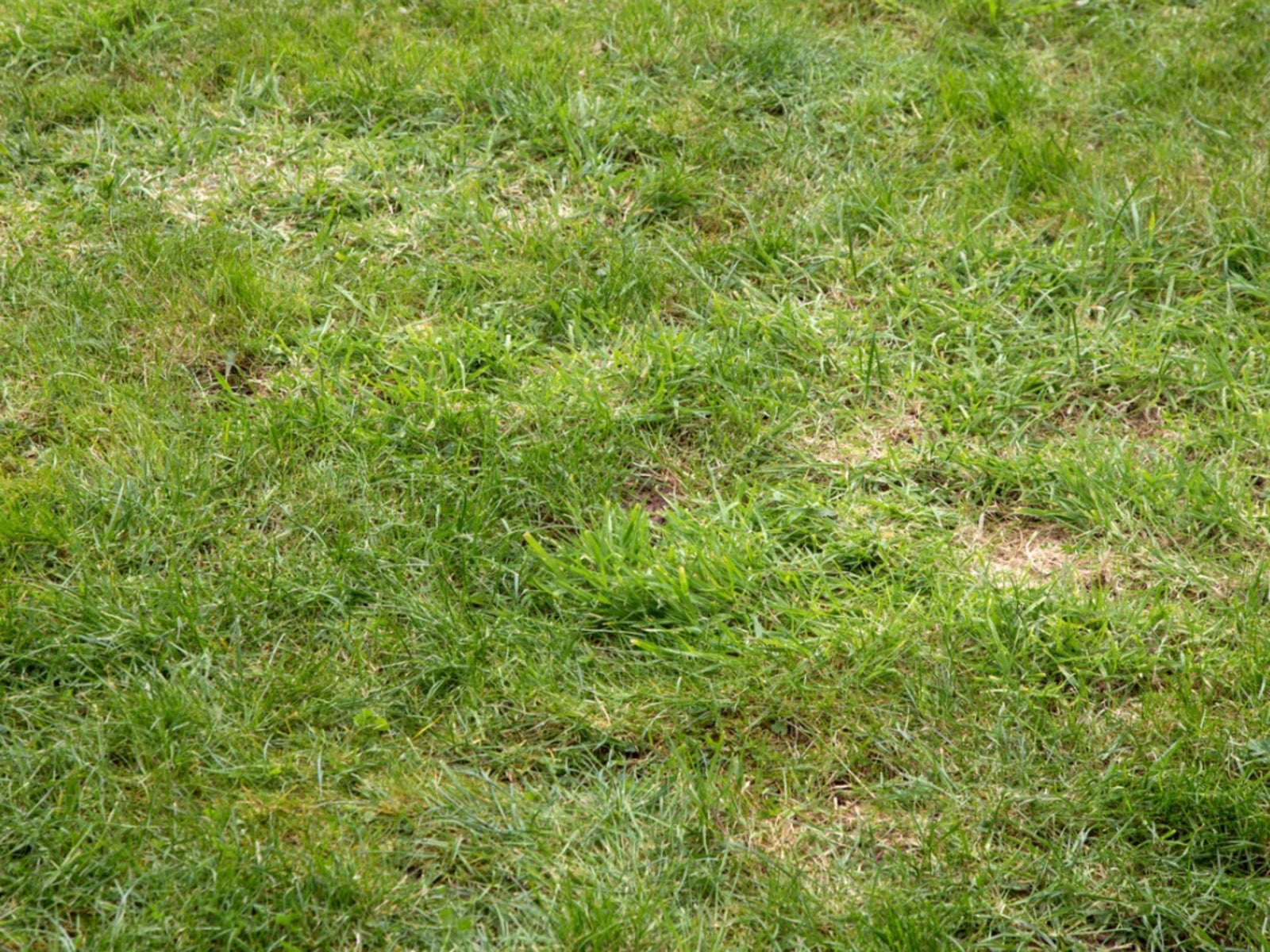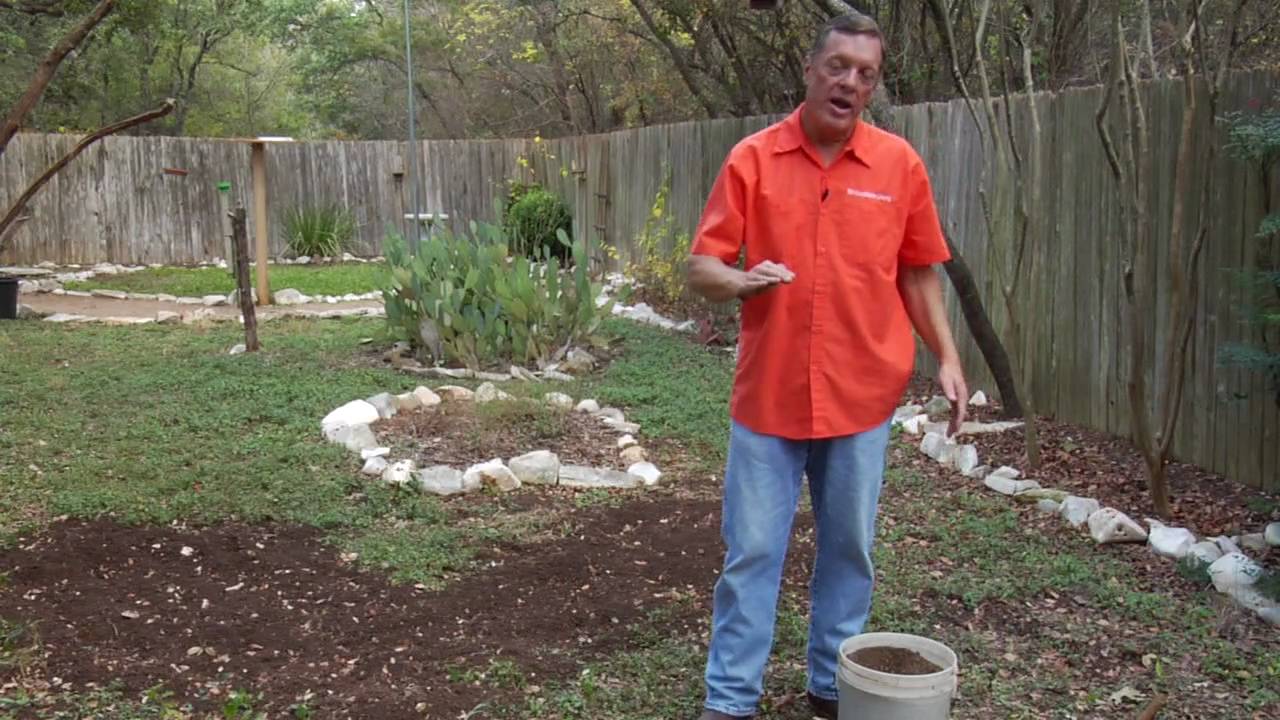To fix low spots in your lawn, you can level the area by adding topsoil and then reseeding the grass. This will help improve the overall appearance of your lawn and create a smoother surface.
Having a lush and even lawn is a pride for every homeowner. However, over time, low spots may develop due to various reasons like foot traffic, improper watering, or settling soil. These low spots not only disrupt the aesthetics of your lawn but also create uneven surfaces that can lead to tripping hazards.
Fortunately, fixing low spots in your lawn is a relatively simple process that can be done with a few basic steps. All you need is some topsoil and grass seed to level out the low spots and encourage healthy grass growth. In this article, we will guide you on how to fix low spots in your lawn effectively and restore its natural beauty.

Credit: www.gardeningknowhow.com
How to Fix Low Spots in Lawn: Expert Tips
Understanding The Causes Of Low Spots In Your Lawn
Understanding the causes of low spots in your lawn is essential for effective troubleshooting. Several factors contribute to their formation, such as poor soil compaction, improper grading, and drainage problems. These issues can result in water pooling in certain areas, leading to the formation of low spots.
Additionally, heavy foot traffic, vehicle movement, and the presence of large tree roots can also contribute to the problem. Identifying the signs of low spots is crucial for timely intervention. Common indicators include areas of the lawn that are consistently wet, puddles that remain stagnant after rainfall, and uneven or sunken sections.
By understanding the causes and recognizing the signs, you can take appropriate steps to fix low spots in your lawn and restore its evenness and health.
Preparing Your Lawn For Spot Treatment
Preparing your lawn for spot treatment requires a few essential tools and materials. First, gather a sturdy garden rake to remove any debris and dead grass from the low spots. Next, you’ll need a garden hose or a watering can to thoroughly soak the area before treatment.
Additionally, a spade or a trowel will come in handy for leveling the low spots, ensuring a smooth surface for new grass to grow. Once the area is leveled, it’s important to have a bag of topsoil on hand to fill in the low spots.
This will provide a fertile base for the new grass to take root and flourish. Lastly, make sure you have grass seed that matches the existing lawn’s type and a spreader for even distribution. By having these tools and materials ready, you’ll be well-equipped to fix those frustrating low spots in your lawn.
Filling Low Spots: Expert Techniques And Tips
Fixing low spots in your lawn can be easily achieved with expert techniques and tips. One effective method is leveling the low spots with topsoil, ensuring a smooth and even surface. Improving drainage is another crucial step, which can be done by using soil amendments and creating a more porous soil structure.
This helps prevent water from pooling in low areas and encourages proper absorption. Additionally, overseeding the low spots with grass seed can improve coverage and fill in any bare areas. By following these techniques, you can restore the beauty and functionality of your lawn, resulting in a lush and well-maintained landscape.
So, don’t let low spots ruin the appearance of your lawn when there are effective solutions available to fix them. Now, your lawn can be the envy of the neighborhood.
Watering And Regular Maintenance
Proper watering techniques are crucial to prevent low spots in your lawn. Ensure that you water the entire lawn evenly, allowing the water to penetrate the soil without creating puddles. Avoid overwatering, as this can lead to the formation of low spots.

Regularly check the water level in your lawn and adjust accordingly. In addition to proper watering, regular maintenance is essential to avoid future low spots. Keep the lawn well-maintained by mowing at the recommended height, removing thatch and debris, and aerating the soil to improve water absorption.
Implementing these lawn care tips will help maintain a healthy, even surface and prevent the development of low spots. Taking proactive measures to address these issues will result in a lush, beautiful lawn.
Common Mistakes To Avoid
When fixing low spots in your lawn, it’s important to avoid common mistakes that can hinder your progress. One pitfall to watch out for during the spot treatment process is using too much topsoil, as this can lead to unevenness.
Another mistake to avoid is not properly compacting the repaired area, which can result in future sinking. Additionally, make sure to water the repaired area adequately to promote healthy growth. Moreover, avoid mowing the spot before it has fully recovered, as this can disrupt the healing process.
In addition, be cautious when using chemical treatments, as they can damage the surrounding grass if not applied correctly. By following these tips, you can ensure a successful lawn repair without encountering unnecessary setbacks.
Seeking Professional Help When Needed

Finding a reliable lawn care service in your area can be a daunting task. However, when it comes to fixing low spots in your lawn, sometimes it’s best to seek professional help. If you’ve tried all the diy methods and your lawn still has issues, it may be time to bring in the experts.
But how do you know when it’s time to call in the professionals? Look out for signs such as persistent low spots that don’t improve with your efforts, excessive water pooling in certain areas, or if you simply don’t have the time or expertise to fix the problem yourself.
In these cases, it’s better to invest in a reliable lawn care service that can efficiently address and fix the low spots in your lawn. Remember, a beautifully leveled lawn not only enhances your property’s aesthetic appeal but also contributes to a healthier and more enjoyable outdoor space for you and your family.
Frequently Asked Questions Of How To Fix Low Spots In Lawn
How Do I Identify Low Spots In My Lawn?
Inspect your lawn for areas that hold water, appear depressed, or are unevenly patched. These are signs of low spots in your lawn.
What Causes Low Spots In A Lawn?
Low spots can be caused by various factors, including soil erosion, improper grading, heavy foot traffic, or even burrowing animals.
Can I Fix Low Spots In My Lawn On My Own?
Yes, you can fix low spots in your lawn yourself. The process involves adding topsoil or a suitable leveling mix to raise the low areas to match the rest of the lawn’s surface.
How Do I Fix A Low Spot In My Lawn?

To fix a low spot, start by removing any debris or grass from the area. Then, add topsoil or a leveling mix to fill the depression, carefully leveling it with a rake. Finally, reseed or sod the area to blend it with the surrounding lawn.
How Long Does It Take To Fix Low Spots In A Lawn?
The time it takes to fix low spots in a lawn depends on the size and extent of the depressions. Simple spot repairs can usually be completed in a day, while larger areas may require multiple days or even weeks of work.
Conclusion
To sum up, fixing low spots in your lawn is a crucial step in ensuring its health and beauty. By following the tips and techniques mentioned in this blog post, you can easily restore your lawn to its former glory.
Whether it’s using topsoil to fill the depressions or employing a leveling rake to even out the surface, these solutions are simple and effective. Regular lawn maintenance practices like aeration and overseeding also play a vital role in preventing low spots from occurring in the first place.
Remember to water your lawn properly and address drainage issues promptly to avoid future low spots. With some patience and effort, you can achieve a smooth and visually appealing lawn that will be the envy of your neighbors.

